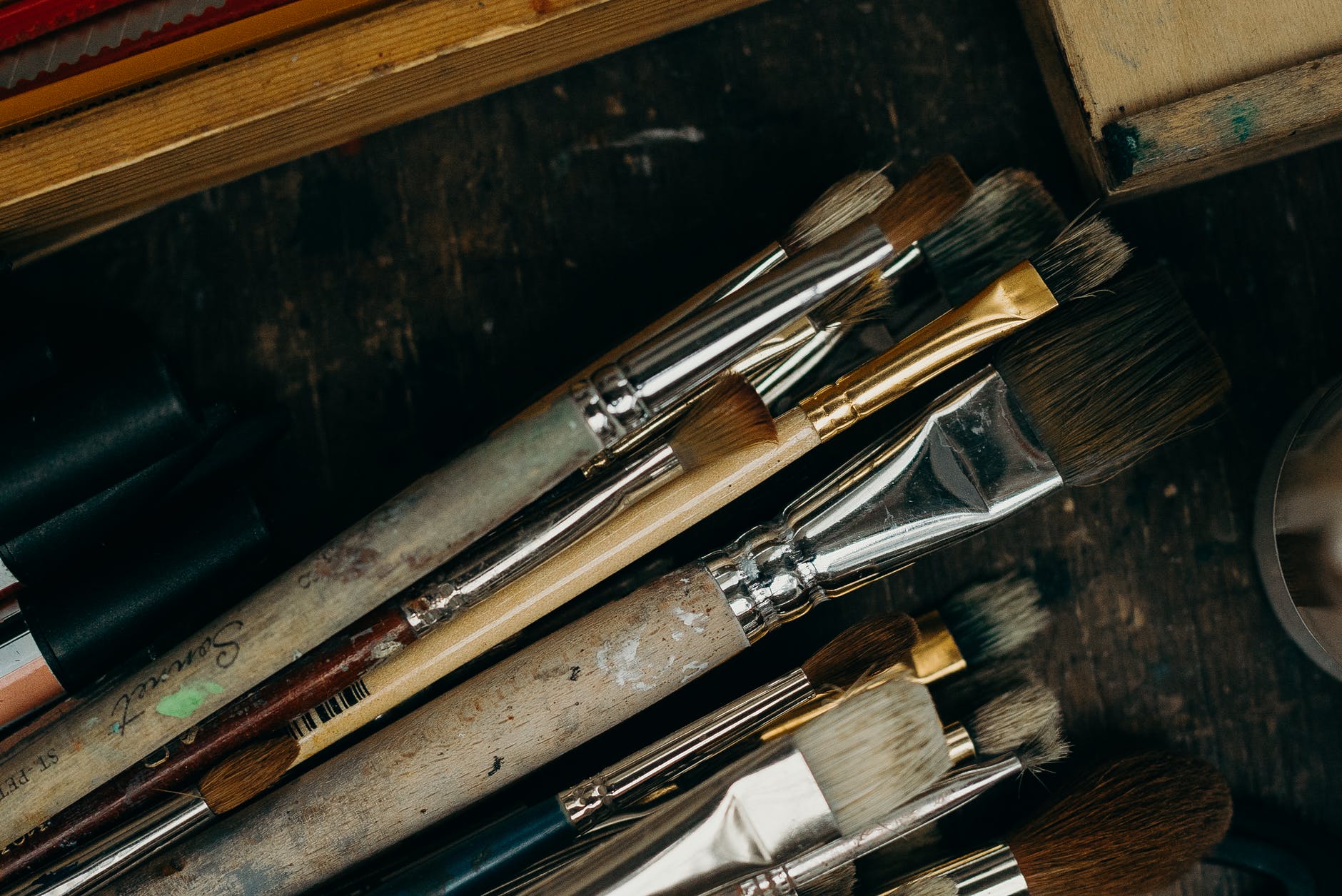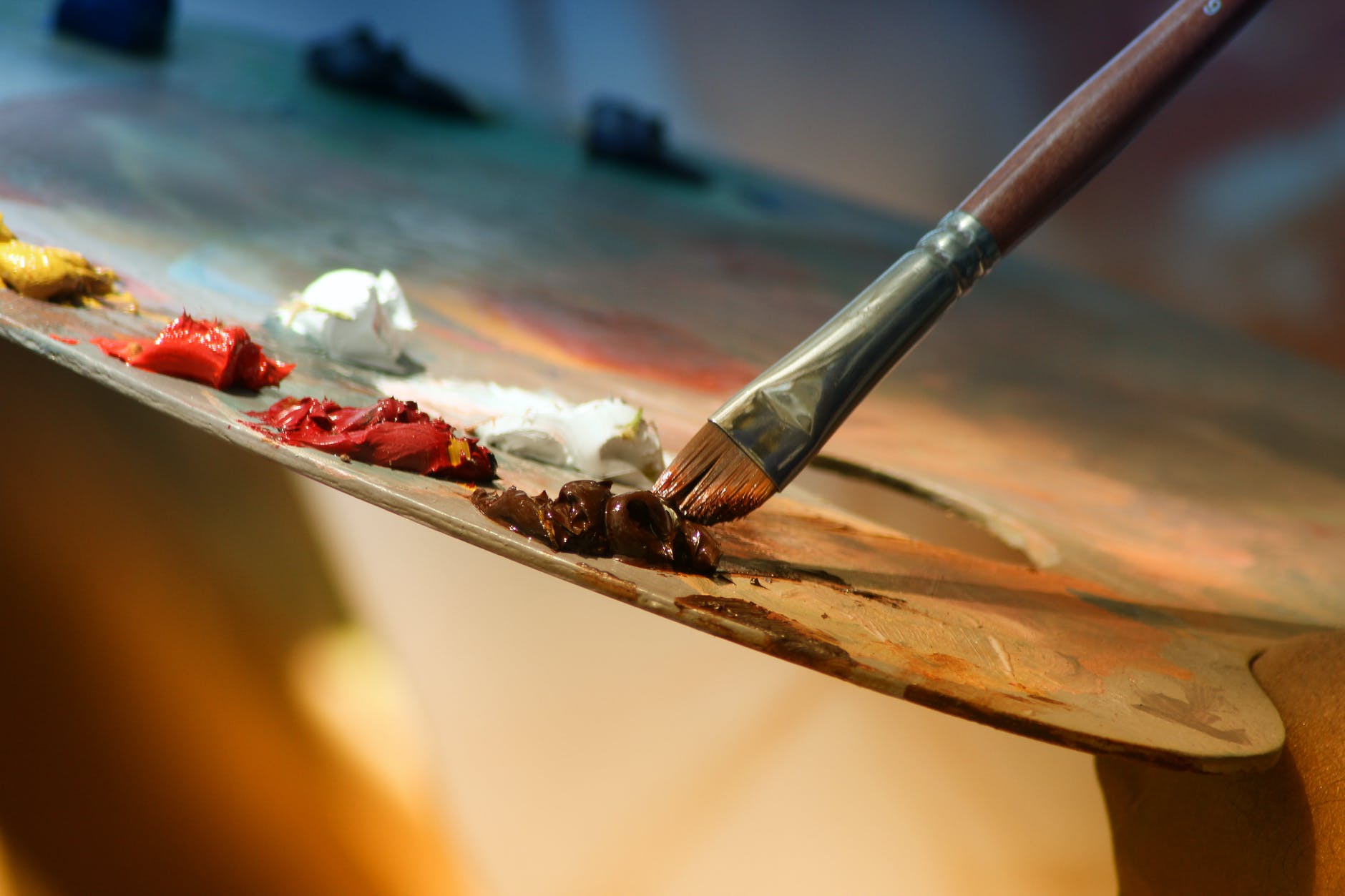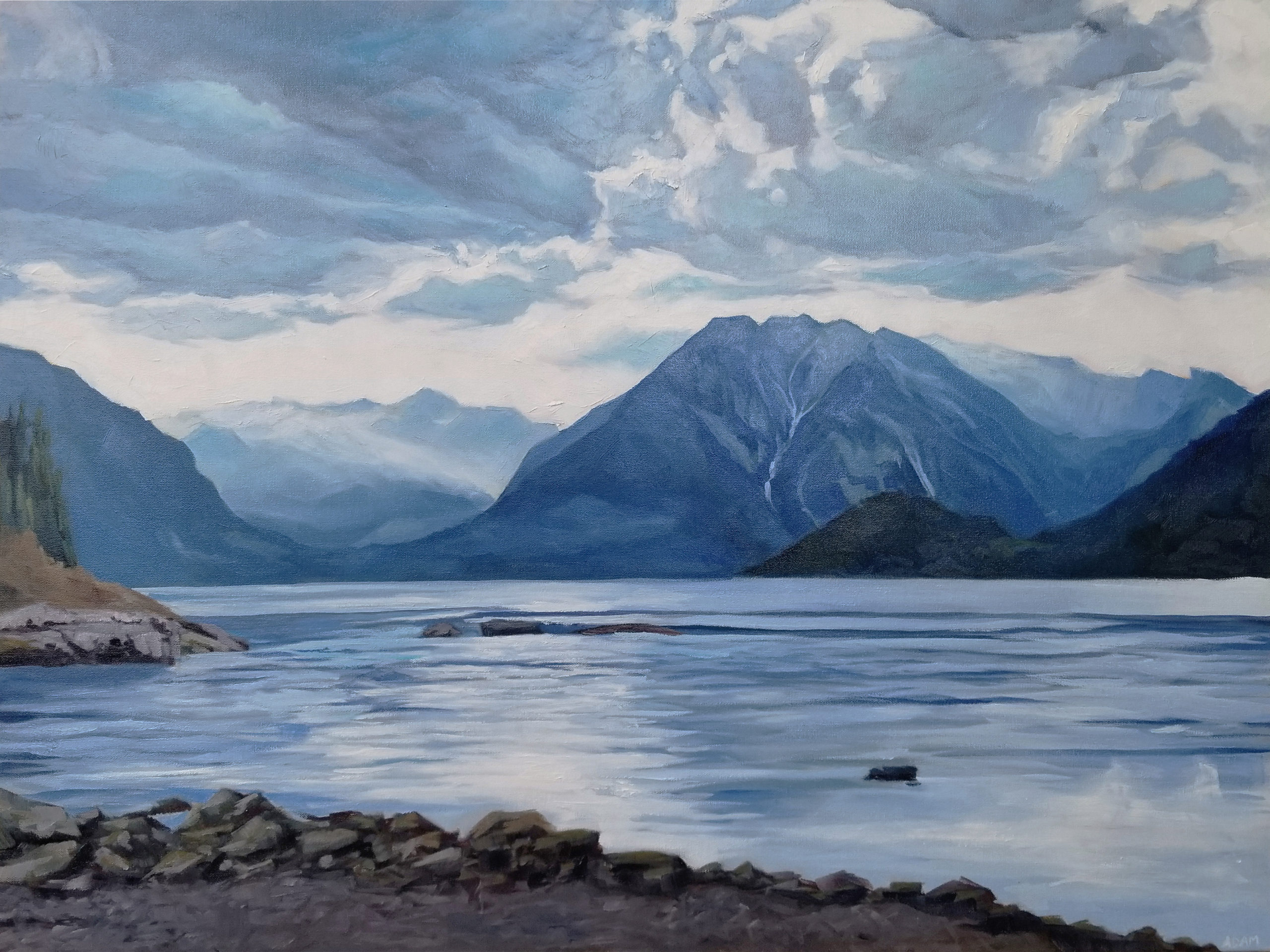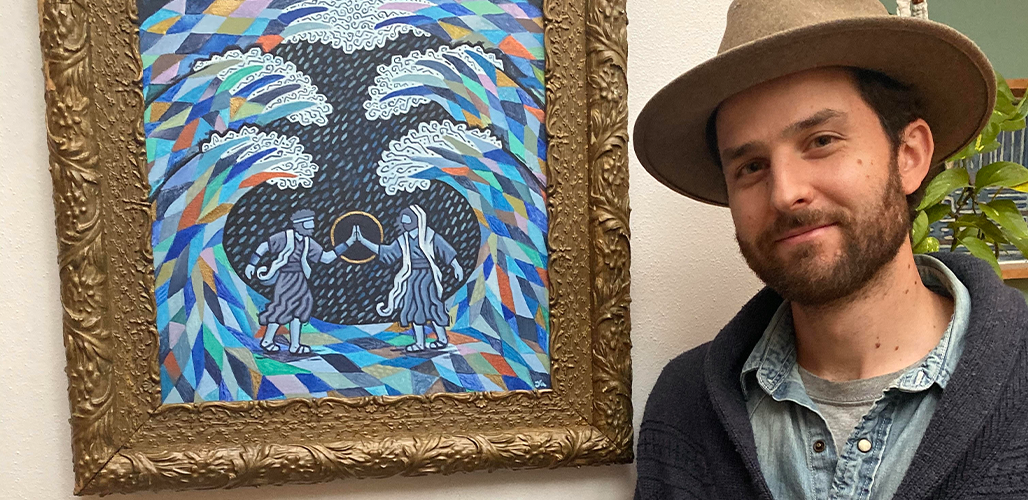
Aren’t All Paintbrushes the Same?
While it might seem like a paintbrush is a paintbrush and will work for any old painting, that’s unfortunately not the case. Just like most projects, you need the right tools for the job. That’s because paint mediums are very different from each other in how you apply them. Watercolor paint really loves brushes that can soak up a lot of water. Acrylic paint usually needs a brush that can apply paint smoothly, since it dries so fast. Oil painting is its own challenge (learn the basics!). So, what do oil painters need for the best results? How do you choose the right paintbrush for oil painting?
Choose the Right Stiffness of Bristle
When you shop for oil brushes, you’ll find that they actually come in some different varieties of stiffness. They range from very stiff hog-hair brushes to springy mongoose, or even to soft sable brushes, among others. And then there are synthetic brushes that simulate all of these varieties. How do these differentiate from each other, practically?
The differences in stiffness allow for vastly different application of paint. A hog-hair brush picks up a good deal of paint and is great for creating textures. Springy brushes are nice for a bit more subtlety and detail. For the finest details and softest touch, go with something like a sable brush, especially if you are employing a glaze technique. Even a handful of painting sessions with each gives a good feel for the differences and you can begin to determine quickly which stiffness is right for your style.
As a note of help, be aware that oil paint is much thicker in consistency than acrylic and watercolor paint. This means that hog-hair or similar brushes are your best bet when doing the majority of your work, especially if you work with medium-to-big canvases. The heftier the brush, the better. Dialing down that heaviness by introducing more oil can open the door for softer brushes. If you choose the right paintbrush for your consistency, your workflow will feel so much more peaceful and things will come together more easily.

Length of the Handle
You might notice that different brushes have different lengths of handle and that it doesn’t necessarily correspond to the size of the brush. Brushes made for oil and acrylic painting have longer handles and watercolor brushes have shorter handles. This has everything to do with the distance from which an oil painter stands from their easel. A longer brush makes it easier to get a grasp on the scene you are painting and quickens comparisons between the painting and the subject.
This is mostly based on tradition and is not a hard-and-fast rule of painting. There are plenty of reasons an oil painter might use a smaller handled brush, primarily having to do with their style and level of detail. I would suggest that if you are painting from life, you try to hold a longer brush, just to get the feel for it. You may find yourself enjoying it!
In fact, you should always challenge yourself with new approaches. That way you can make more educated decisions about what you like. Try choking up on the handle for a while and then try holding it towards the end. You will get a better grasp (literally and figuratively) on the tool you are using. Some of your best work might be the result of intentional grip on the brush.
Paintbrush Shapes and How They Affect Your Painting
Let’s do a quick rundown of the different shapes of brushes you will find. Knowing each brush’s purpose empowers you to make educated decisions while painting so you can choose the right paintbrush for what you are trying to do.
Flat – This is a great brush for holding a good amount of paint and filling in large areas. You might use a flat when laying in your first layers, especially if you need the benefit of right angles.
Round – Similar to a flat in its purpose, the round allows you to adjust the width of your lines based on the pressure you exert on it. A great all-around brush.
Bright – Similar to a flat in shape, but with shorter bristles. These brushes don’t spread paint as easily, but they are great for moving and placing paint.
Filbert – A combination of a flat and a round, this brush lays in paint with a lot of flexibility. Not great for right angles, but perfect for organic shapes.
Fan – Often used for blending softly, fan brushes also add intricate texture with little effort.
There are other types of brushes out there to try, but these are your basics. Try them out and you might find your favorite combinations. I personally like to limit my brush selection to flats, rounds, filberts, and brights, with some variation in size. This just helps me maintain the style I like.

Does Size Matter?
When I first started painting, I went with small brushes. Being used to drawing, I figured having a brush that could mimic a pencil or pen would be the best way to handle the paint. That method is like using colored pencils to color in a coloring book. It’s the method of paint-by-numbers – find the right color for the spot and color it in.
With time I began to study more art and learned that the painters I really responded to were the ones that used their brushes to emulate form, not fill it in. The brush stroke and its varied width and arc are used to sculpt the shapes of the subject. This was a method I was excited about (and still am!).
When it comes to brush sizes, be aware of your aim. What is your goal? Many artists love a very delicate and finely detailed painting. Others use large brushes to describe their shapes. One of my favorite artists, John Singer Sargent, recommended using a brush larger than you think you’ll need. If you look at his work, you can see from his style that he emphasized his strokes, letting them sit in plain sight. So, look at what artists appeal to you and try out some of their techniques. You’ll really learn a lot!
In Conclusion
Who knew there was so much to learn about paintbrushes? Now you know! I’ve said it before, but I’ll say it again: one of the things I really love about oil painting is how flexible it is. I think this guide proves that! Now you know how to choose the right paintbrush for oil painting.







